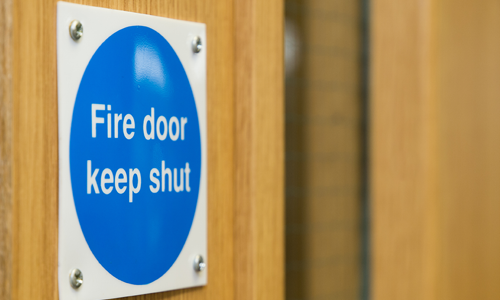Assa Abloy: Door Closers and Fire Safety
No one needs a reminder of the devastation caused by fire in a large building. One result of recent tragedies is that fire doors now receive the attention and regulation they deserve. Just as importantly, however, any fire door must be properly closed to be effective. This is where a building manager’s choice of door closer technology can make the difference.
“Historically, fire doors and their components have often been overlooked in building fire safety,” says Richard Wilson, Door Closer Product Manager at Assa Abloy Opening Solutions EMEIA. “But over the last few years, their vital importance has been recognized. Doors are critical safety features. They provide fire protection and compartmentation. Like any door security technology, fire protection will only work if the door is fully closed, preventing the spread of fire and smoke. Relying on building users to do this 100 percent of the time is not realistic.”
Door closer technology can help. A certified door closer which is properly fitted helps to build a barrier to aid escape and slow a blaze’s progress with compartmentation. After analysing one recent tragedy in New York, city officials said the death toll would have been lower if doors were properly closed1.
Door closers and fire safety
Every element on a fire door, not just the leaf, must be tested to industry standards and certified. This includes door and architectural furniture. Among these components, door closing devices are of vital importance.
“Companies which supply life-critical building equipment must be confident in its performance in real-world situations,” explains Wilson. “Most architects and building specifiers now request product datasheets with primary fire test data from an accredited third-party testing house.”
The added value of Assa Abloy
The broad portfolio of Assa Abloy door closing solutions is fully tested and certified to meet the needs and regulations of new buildings and retrofit projects.
“There is an effective, efficient Assa Abloy Door Closer available for almost any opening, of any door size or type,” adds Wilson.
Besides full test coverage, correct installation is of course critical, as Fire Safety Week advice for landlords highlights2: “Fire doors are not ordinary doors. They’re a carefully engineered fire safety device. They must be fitted correctly.”
To support installers, all Assa Abloy product labels include QR codes which link directly to installation walk-through videos. To assure ongoing performance, every Assa Abloy model has a long warranty and is supplied with maintenance instructions.
Cam-Motion guiderail vs. rack and pinion door closing technology
Cam-Motion Door Closers provide an ergonomic opening experience for everyone who passes through the door. The necessary user push-force falls rapidly on opening, which enhances comfort.
Because Assa Abloy Cam-Motion devices’ closing force and latch speeds are independently adjustable, the door can be configured to close reliably each time. Thermo-resistant valves with metal heads, rather than plastic, ensure adjustments are dependable: Once door speeds are set, they stay set. Even with wind pressure, draughts or air suction effects, doors shut tight.
In comparison, rack and pinion door closers are more common and cost-effective, but do not tend to operate as efficiently for fire doors, according to the UK’s Fire Protection Association3.
All Assa Abloy Cam-Motion devices are tested to EN 1154 standard for fire and smoke protection. The door closers’ symmetric cam is designed to fit to either frame or door, and on hinge or non-hinge side: Whatever suits the opening best with no compromises or workarounds needed from the installer.
“The degree of so-called ‘passive fire protection’ given by a fire door is greatly enhanced by the intelligent technology inside an Assa Abloy Door Closer,” says Richard Wilson.
1 www.cityandstateny.com/policy/2022/01/after-deadly-bronx-fire-will-nycs-self-closing-door-law-be-better-enforced/360582/
2 www.firedoorsafetyweek.co.uk/advice/council-and-social-housing
3 www.thefpa.co.uk/news/fire-safety-advice-and-guidance/do-fire-doors-need-to-be-self-closing-















